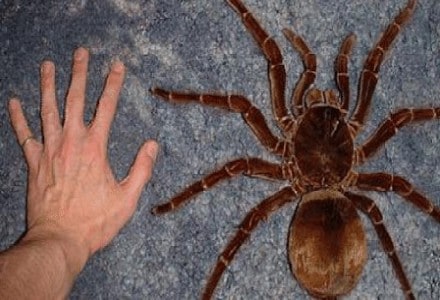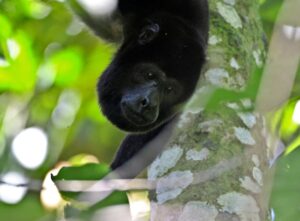In the lush rainforests of Belize, amidst the cacophony of wildlife and the vibrant colors of tropical flora, lurks a creature that captures the imagination like few others—the Goliath Bird-Eating Spider. While not native to Belize, this giant arachnid has made occasional appearances in the region, leaving both awe and trepidation in its wake. With a size that defies belief and a reputation for being a formidable predator, the Goliath Bird-Eating Spider stands as a fascinating and fearsome resident of Belize’s natural landscapes. Let’s delve deeper into the world of this remarkable arachnid and uncover the truths behind its mystique.
Origins and Habitat: Exploring How the Goliath Bird-Eating Spider Found Its Way to Belize
The journey of the Goliath Bird-Eating Spider to Belize is a testament to the adaptability and resilience of these remarkable arachnids. Native to the rainforests of South America, particularly in countries like Brazil, Venezuela, and Suriname, these spiders are not endemic to Belize. However, due to factors such as climate change, habitat destruction, and accidental transport, they have occasionally been sighted in Belizean territories.
One of the key factors in their spread beyond their native range is their ability to hitchhike on various modes of transportation. These spiders are known to hide in shipments of goods, including plants and agricultural products, inadvertently finding themselves transported across borders. This phenomenon, while unintentional, has led to the presence of Goliath Bird-Eating Spiders in regions far from their original homes.
In Belize, these spiders are most commonly found in the dense, humid forests of the Cayo District and the Toledo District. These areas provide the ideal habitat for them, with ample prey in the form of insects, birds, and small mammals. The lush vegetation, abundant tree cover, and favorable climate create an environment where these spiders can thrive and establish temporary populations.
Interestingly, the presence of Goliath Bird-Eating Spiders in Belize has sparked curiosity and concern among both locals and researchers. While their numbers are not as prolific as in their native habitats, their occasional sightings highlight the interconnectedness of ecosystems and the impact of global environmental changes.
Despite not being native to Belize, the Goliath Bird-Eating Spider’s presence serves as a reminder of the complex web of life that spans continents and the ongoing challenges faced by species in a changing world.
Size and Characteristics: Delving into the Impressive Size, Striking Features, and Unique Adaptations of the Goliath Bird-Eating Spider
The Goliath Bird-Eating Spider is aptly named for its astonishing size, making it one of the largest spiders in the world by leg span. These arachnids can reach sizes of up to 11 inches (28 centimeters) across, with some individuals boasting even larger dimensions. This sheer size alone sets them apart as formidable predators in their ecosystems.
One of the most striking features of the Goliath Bird-Eating Spider is its robust and hairy body, which contributes to its intimidating appearance. Their hairy legs and body serve multiple purposes, including sensory functions that help them detect vibrations and movements around them. Additionally, these hairs can also aid in capturing prey and providing some level of protection against predators.
Despite their fearsome reputation, Goliath Bird-Eating Spiders are not aggressive towards humans and typically avoid confrontation when possible. Their primary diet consists of insects, small rodents, and occasionally, birds. Contrary to popular belief, they do not actively seek out or “hunt” birds but may opportunistically feed on them if the opportunity arises.
One of the most fascinating adaptations of these spiders is their ability to produce silk of exceptional strength. Their silk is not only used for web-building but also for constructing burrows and creating egg sacs to protect their offspring. This silk is incredibly durable, capable of withstanding considerable force and serving as a testament to the intricate engineering of these arachnids.
Overall, the Goliath Bird-Eating Spider’s size, features, and adaptations showcase the marvels of nature’s diversity and the incredible capabilities of these enigmatic creatures. While they may evoke a sense of unease in some, they play an essential role in their ecosystems and contribute to the intricate balance of life in Belize’s natural landscapes.
Myths vs. Reality: Separating Fact from Fiction about the Goliath Bird-Eating Spider’s Behavior, Venom Potency, and Interactions with Humans in Belize
The Goliath Bird-Eating Spider has garnered a reputation surrounded by myths and misconceptions, often leading to fear and misunderstanding. Separating fact from fiction is essential to appreciate these spiders’ true nature and their role in Belize’s ecosystems.
One common myth about Goliath Bird-Eating Spiders is their aggressiveness towards humans. In reality, these spiders are typically shy and will only bite in self-defense if they feel threatened. Their venom, while potent against their natural prey like insects and small animals, is not considered lethal to humans. Bites from these spiders are rare, and even if they occur, they usually result in mild symptoms similar to a bee sting.
Another misconception is that these spiders actively hunt and consume birds. While they are capable of preying on small birds, such events are infrequent and opportunistic rather than a primary hunting strategy. Their diet primarily consists of insects, making them valuable contributors to controlling pest populations in their habitats.
In Belize, interactions between Goliath Bird-Eating Spiders and humans are minimal due to their reclusive nature. However, when encountered, these spiders typically retreat rather than engage in aggressive behavior. Educating the public about these spiders’ true behavior and dispelling myths can foster a greater understanding and appreciation for these fascinating creatures.
Additionally, conservation efforts play a vital role in preserving the natural habitats where Goliath Bird-Eating Spiders reside. Protecting these ecosystems benefits not only the spiders but also the myriad of plant and animal species that depend on them for survival.
By addressing misconceptions and promoting accurate information, we can foster coexistence and appreciation for the Goliath Bird-Eating Spider as a unique and valuable part of Belize’s biodiversity.
Final Thoughts
In conclusion, the Goliath Bird-Eating Spider in Belize embodies the complex interplay between nature’s wonders and human perceptions. Despite its fearsome name and appearance, this spider plays a crucial role in maintaining ecological balance, particularly in controlling insect populations.
Understanding the reality behind the myths surrounding these spiders is key to appreciating their contributions to Belize’s rich biodiversity. While they may inspire awe and caution, it’s important to remember that they are an integral part of their ecosystems and rarely pose a threat to humans.
By promoting education, conservation, and responsible coexistence, we can ensure that the Goliath Bird-Eating Spider continues to thrive in its natural habitat while fostering a deeper appreciation for the intricacies of Belize’s natural world.
Next time you venture into the rainforests of Belize, keep an eye out for these fascinating arachnids, but rest assured that they are more likely to scuttle away than to pose any real danger. Embracing the diversity of life, even the creatures that may seem daunting at first glance, enriches our understanding of the natural world and our place within it.




